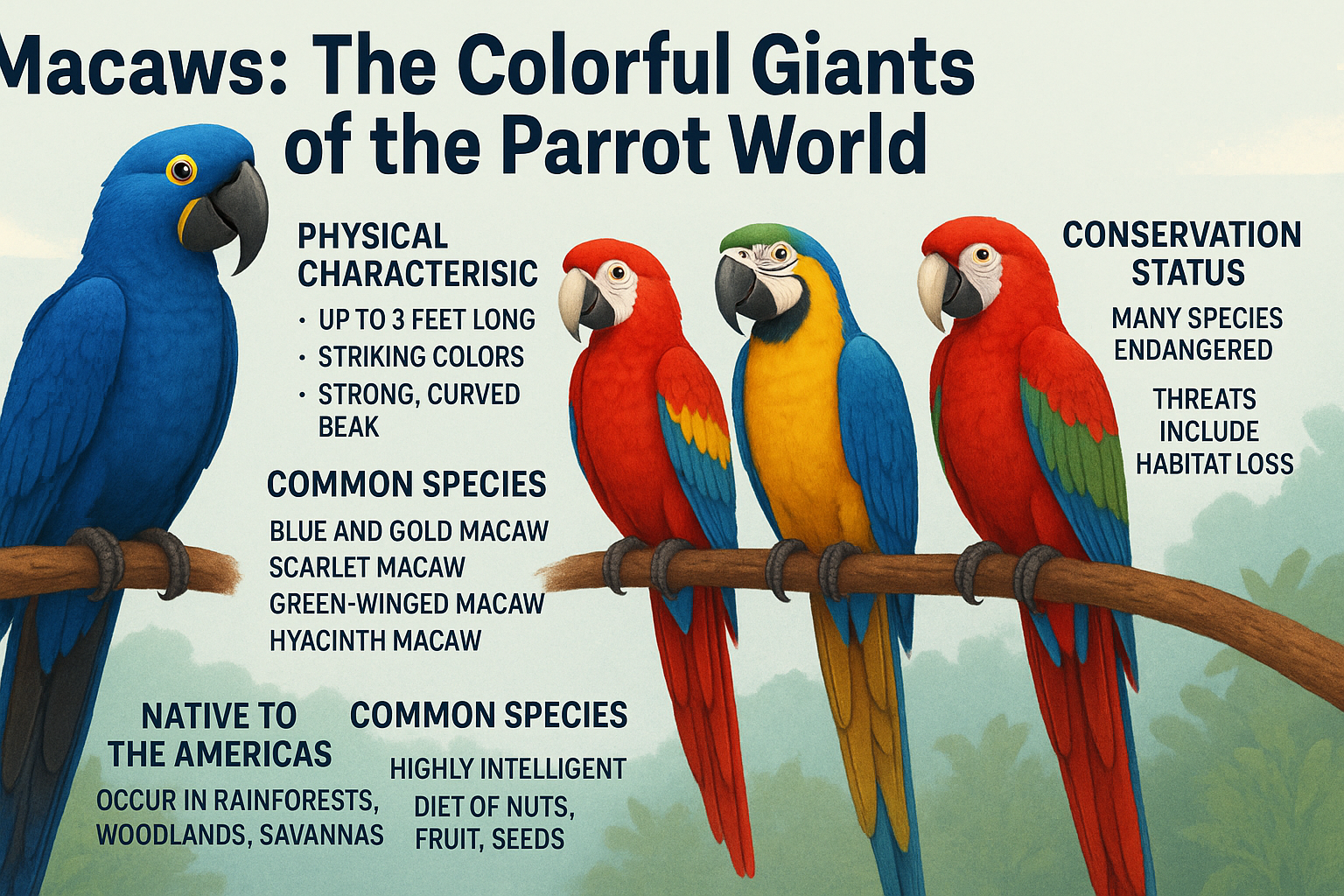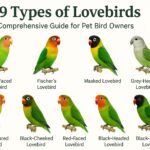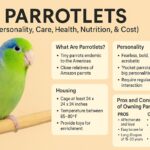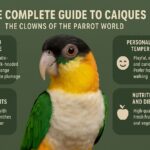Macaws stand as some of the most striking birds in existence, instantly recognizable by their vibrant plumage, curved, powerful beaks, and impressive size. These magnificent birds capture our imagination with their intelligence, social nature, and remarkable ability to mimic human speech.
Native to the Americas, macaws have fascinated bird enthusiasts for centuries, both in their natural rainforest habitats and as companion animals. This article explores these fascinating parrots in detail, covering their species diversity, physical characteristics, natural behaviors, diet, habitat requirements, and the conservation challenges they face in today’s changing world.
Macaws: History and Appearance
Macaws belong to the Psittacidae family, representing some of the largest members of the parrot world. These birds are characterized by their large size, colorful feathers, and distinctive facial patterns. Their playful and inquisitive nature makes them particularly engaging creatures to observe and interact with. One of their most remarkable abilities is their talent for mimicking human vocalizations, allowing them to reproduce words and phrases with surprising accuracy.
Physically, macaws possess strong beaks that have evolved perfectly for cracking open and consuming a variety of nuts and seeds in their natural habitat. These powerful beaks can apply tremendous pressure, enabling macaws to access food sources that remain inaccessible to other birds. Additionally, macaws are impressive flyers, capable of reaching speeds up to 56 kilometers per hour (35 miles per hour), allowing them to travel significant distances in search of food and suitable nesting sites.
The size range within the macaw family is quite substantial. The largest member, the majestic Hyacinth Macaw, can reach up to three feet in length from beak to tail tip. In contrast, the smallest variety, the Hahn’s Macaw, is much more modest in size, comparable to a standard parakeet.
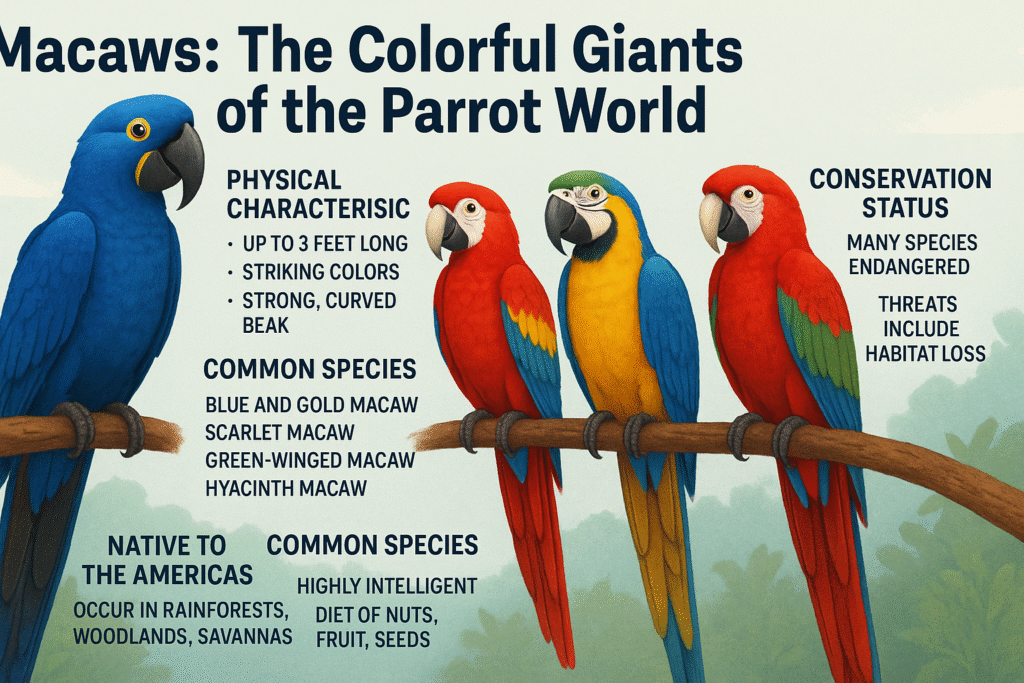
Types of Macaws
The macaw family includes numerous species, each with distinctive coloration patterns and unique characteristics. Some of the most notable species include:
Common Macaw Species
The Blue and Gold Macaw stands out with its striking blue upper body and golden underside. These birds possess one of the largest natural ranges among all macaw species, found across various regions from Eastern Panama to Bolivia, Paraguay, and throughout many northern areas of South America and eastern Brazil.
The Scarlet Macaw features an incredible combination of bright red, yellow, and blue feathers, making it one of the most visually stunning birds in the entire animal kingdom. Their vivid appearance helps them blend into the colorful fruits and flowers of their tropical forest homes.
The Green-Wing Macaw (also known as the Red-and-Green Macaw) displays deep red body feathers accompanied by green wings and bright blue flight feathers, creating a truly spectacular visual effect.
The Hyacinth Macaw, often called the Blue Macaw, is particularly noteworthy for its uniform cobalt blue plumage and distinctive yellow eye rings and bill accents. These magnificent birds primarily inhabit riverside rainforests and palm swamps, typically favoring areas with a broken canopy.
They can also be found in mature palm forests and grassy marshes. Brazil’s Pantanal region offers some of the best opportunities for spotting these impressive birds in their natural environment.
Endangered and Extinct Species
Unfortunately, several macaw species face serious conservation challenges. The Spix’s Macaw has been classified as extinct in the wild, with surviving individuals maintained only in captivity. Similarly, the Glaucous Macaw has likely been driven to extinction, with only two confirmed sightings documented throughout the entire 20th century.
Other critically endangered species include the Blue-Throated Macaw, which continues to face significant threats to its survival. Several other macaws carry the endangered classification, including Lear’s Macaw, the Great Green Macaw, and the Red-fronted Macaw. These conservation statuses highlight the vulnerability of these magnificent birds in today’s changing world.
Hybrid Types
Beyond naturally occurring species, several hybrid macaws have been developed through selective breeding programs, particularly for the pet trade. Some common hybrids include:
- Catalina Macaw (Scarlet x Blue and Gold)
- Camelot Macaw (Catalina x Scarlet)
- Calico Macaw (Green-winged x Military)
- Harlequin Macaw (Green-winged x Blue and Gold)
- Caloshua Macaw (Blue and Gold x Hyacinth)
- Shamrock Macaw (Military x Scarlet)
Each of these hybrid varieties displays unique color patterns that combine characteristics from their parent species.
Natural Habitat and Distribution
Macaws inhabit various regions across the Americas, with their natural range extending from Mexico southward throughout Central America and into South America. Within these regions, different macaw species have adapted to various habitat types.
Most commonly, macaws occupy rainforest environments, though some species show preferences for savannahs and woodlands. Many macaw species demonstrate a particular affinity for areas near rivers and other water bodies. For instance, the Blue and Gold Macaw typically prefers wooded habitats in close proximity to water sources.
The specific habitat preferences can vary significantly between species. While some macaws thrive in dense forest interiors, others, like the Hyacinth Macaw, tend to favor forest edges and more open areas. When residing in regions with dense forest coverage, Hyacinth Macaws typically remain near the forest periphery where open spaces are more readily available.
Behavior and Social Characteristics
Macaws are highly social birds that typically live in groups or flocks in their natural environment. Their presence in dense forests rarely goes unnoticed, as they produce loud screeching and squawking vocalizations that carry over considerable distances. These vocalizations serve multiple purposes, including communication within the flock, territory establishment, and mate attraction.
Intelligence stands as a defining characteristic of macaws. They demonstrate remarkable problem-solving abilities and can learn to manipulate various objects with their beaks and feet. Perhaps their most famous cognitive ability is their capacity to mimic human speech and other sounds they hear regularly.
This capability makes them particularly engaging as companion animals, though it has also contributed to their popularity in the pet trade, which has unfortunately impacted wild populations.
Socially, macaws form strong bonds, particularly with their mates. Most macaw species practice monogamy, maintaining the same partner throughout their lives. This bonding behavior extends to humans when macaws are kept as pets, allowing them to form deep attachments to their caretakers.
Reproduction and Nesting Behaviors
The reproduction patterns of macaws follow consistent seasonal cycles. Most species engage in breeding activities during spring and early summer. During this period, bonded pairs search for suitable nesting locations to raise their young.
Macaws demonstrate particular preferences when selecting nesting sites. Ideally, they seek out existing holes in mature trees, which they then modify and enlarge using their powerful beaks. This “beaking” behavior involves chipping away at the edges of tree hollows, creating wood shavings that later serve as lining material for their nests. Some species, however, may utilize cliff face cavities rather than tree hollows.
The female typically lays between 3-5 eggs per clutch. During the incubation period, which generally lasts 25-30 days, the female takes primary responsibility for sitting on the eggs. Meanwhile, the male assumes the crucial role of providing food for his mate.
Once the chicks hatch, parenting responsibilities shift to a more equitable arrangement, with both parents contributing to feeding duties for their growing offspring. This cooperative parenting approach helps ensure the survival of the young birds during their vulnerable early developmental stages.
Conservation organizations like the Hyacinth Macaw Project work to support breeding success by researching macaw behavior and installing nest boxes in areas where natural nesting sites have become scarce. These artificial nesting sites often include protective features such as metal strips that prevent predators from accessing the nests and also provide additional protection against forest fires.
Diet and Nutrition
Macaws have evolved specialized feeding adaptations, particularly their strong beaks that allow them to crack open tough nuts and seeds that many other birds cannot access. This ability gives them access to a wider range of food sources in their natural environment.
Natural Diet
In the wild, macaws consume a diverse diet consisting primarily of fruits, nuts, seeds, berries, and vegetable matter. Different species have developed preferences for particular food sources based on their specific habitat and evolutionary history. The Hyacinth Macaw, for example, has specialized in eating certain palm nuts that other animals find too difficult to crack open.
Diet in Captivity
For macaws kept as pets or in conservation programs, proper nutrition requires careful attention. Experts recommend a mixed diet containing appropriate proportions of various nutrient sources. The following guidelines help ensure optimal nutrition for captive macaws:
- Seeds should constitute approximately 10-25% of the diet, with 10% considered ideal
- Protein sources should make up about 20% of dietary intake, with plant-based proteins like rice, beans, and tofu being particularly suitable
- Vitamins should represent approximately 30% of the diet, with emphasis on Vitamin A from sources like broccoli, sprout leaves, and dandelion greens
- Fresh vegetables, particularly dark yellow and leafy green varieties, play an essential role in a macaw’s diet
- Dark colored fruits provide important nutrients, with color intensity generally correlating with nutritional value
- Commercial pellet formulations (such as Harrison’s, Zupreem Natural, or Foundation formula) can supplement the diet effectively
Certain foods should always be avoided, as they pose significant health risks to macaws. These include chocolate, avocado, rhubarb, alcohol, caffeine, processed meat products, onions, germinated lima beans, fruit pits, apple seeds, and most dairy products (with the exception of small amounts of hard cheese or yogurt). Additionally, peanuts with yeast coating can cause respiratory problems and should be excluded from a macaw’s diet.
Lifespan and Health
Macaws rank among the longest-living bird species, with lifespans that can rival those of humans under optimal conditions. In their natural habitat, a Blue-and-Gold Macaw typically lives approximately 30 years. However, when kept in captivity with proper care, their lifespan can extend dramatically to 50-60 years.
This remarkable longevity means that adopting a macaw as a pet represents a substantial long-term commitment, potentially spanning several decades. Many macaw owners find themselves needing to make provisions for their birds’ care in their estate planning, as the birds may outlive them.
Conservation Challenges
Many macaw species face serious threats in the wild, with several already classified as endangered or critically endangered. The Spix’s Macaw has been declared extinct in the wild, surviving only through captive breeding programs. Other species like the Blue-Throated Macaw and Glaucous Macaw are critically endangered, facing imminent risk of extinction without intervention.
Multiple factors contribute to the decline of wild macaw populations. Habitat destruction, particularly through deforestation of rainforests, represents a primary threat, eliminating both feeding grounds and nesting sites. The illegal wildlife trade also presents a significant challenge, as the vibrant appearance and engaging personalities of macaws make them valuable targets for poachers supplying the black market pet trade.
Conservation organizations work to address these challenges through various approaches, including habitat protection, artificial nest installation, population monitoring, and captive breeding programs.
The Hyacinth Macaw Project represents one such initiative, focusing on research, monitoring, and practical interventions like providing nest boxes in areas where natural nesting sites have become scarce.
Conclusion
Macaws represent some of nature’s most spectacular creations, combining striking visual beauty with remarkable intelligence and personality. These iconic birds have captured human imagination for centuries, yet many species now face uncertain futures due to human activities impacting their natural habitats.
Understanding the diverse species, behaviors, dietary needs, and habitat requirements of macaws provides essential knowledge for both conservation efforts and responsible pet ownership. As we continue to learn more about these magnificent birds, we gain greater appreciation for their complex needs and unique adaptations.
Whether observed in their natural rainforest habitat or kept as companion animals, macaws remind us of the remarkable diversity of the avian world and our responsibility to protect threatened species for future generations. Through continued research, conservation initiatives, and responsible practices, we can work to ensure that these colorful giants of the parrot world continue to thrive both in the wild and in human care.
- Parrotlets (Personality, Care, Health, Nutrition, & Cost) - June 20, 2025
- Caique (Personality, Care, Health, & Nutrition) - June 20, 2025
- The Complete Guide to Golden Retrievers - June 9, 2025
